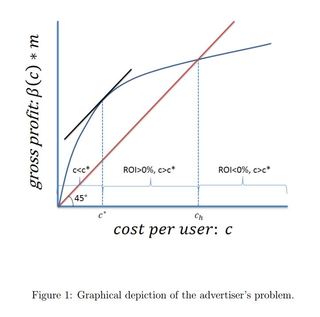Your Job Is Impossible
The job of a digital analyst is incredibly difficult - and a paper from Google and Microsoft drives that point home, with a focus on the near impossibility of measuring return on investment.
The job of a digital analyst is incredibly difficult - and a paper from Google and Microsoft drives that point home, with a focus on the near impossibility of measuring return on investment.
Yes, you always knew it and now there’s proof – from Google and Microsoft no less.
The paper is called “On the Near Impossibility of Measuring the Returns to
Advertising” and is about a year and a half old.
For those of you who do not have the time (I’m looking at you – all of you!) here’s the TL;DR version:
Using 25 online field experiments, representing $2.8 million in ad spend, Randall A. Lewis (economic research scientist, Google) and Justin M. Rao (economic researcher, Microsoft) showed that you cannot measure the causal impact of choice variables on profit even given access to reliable signals.
Attribution? Fuhgettaboutit.
In their own words:
“We find that even when ad delivery and consumer purchases can be measured at the individual level, linked across purchasing domains, and randomized to ensure exogenous exposure, forming reliable estimates on the returns to advertising is exceedingly difficult, even with millions of observations. As an advertiser, the data are stacked against you.”
There’s just too much noise in the system. To arrive at statistical significance, you’d need to run so many ads that marketplace conditions will have changed between start and finish. You’d need millions of person-weeks of trials to “reliably distinguish disparate hypotheses such as ‘the ad had no effect’ (-100% ROI from ‘the ad was profitable for the firm’ (ROI>0%).”

And that’s just for return on investment (ROI). “Determining the profit maximizing level of ROI is far harder, as it requires one to estimate the shape of the underlying profit function. We briefly discuss the (rather incredible) difficulties of this enterprise.”
The paper has gratifying graphs to occupy your left and right brains, such as this figure depicting an ROI model where, “c* gives the optimal spend level, and ch (h for ‘high’) gives the spend level where ROI is exactly 0%. Any point past ch and the firm has negative earnings on the spend whereas any point to the left of c∗ the firm is under-advertising.”
There are scads of equations and pages of scholarly references, but the conclusion is that old John Wannamaker is plumb out of luck: “The advertising market as a whole may have incorrect beliefs about the causal impact of advertising on consumer behavior.”
The same thing professionals in other industries do: We make it up as we go along.
People practice medicine. There is no definitive definition of “healthy.”
People practice law. You may win a case, but it can be appealed.
People practice accounting. Everybody is open to an audit.
People practice coding. There is no ideal program.
We have Marketing Mix Modeling at the top of the food chain and Optimization at the bottom. At the high end, you can get rather sophisticated juggling budgeted buckets of money to shift a little more from television to search pay-per-click (PPC) or from online display to retargeting. At the bottom, you can employ complex testing tools and tweak user experience design for incremental improvements in outcomes.
 But in the middle, there is attribution, where the goal is to create a model that can account for so many variables, it simply tells you where, when, and how to spend your money.
But in the middle, there is attribution, where the goal is to create a model that can account for so many variables, it simply tells you where, when, and how to spend your money.
This assumes that if we learn how to stir this alphabet soup well enough and stir it long enough, it will eventually spell out all the works of Shakespeare.
In the words of Lewis and Rao, this is not impossible, but exceedingly difficult.
In the words of George Box, “All models are wrong, but some are useful.”
If you find a useful model, congratulations! Use it as long as it remains useful, but no longer. And please heed that other piece of good advice, “In statistics, as in art, never fall in love with your model.”
If I have gored your ox, please let me know. There are mathematicians, software vendors, book writers, and pundits who have helped us reach this moment of great expectation and Big Data enchantment. If you are among them, I would love to understand if there is a LaGrange Point between Marketing Mix Modeling and Optimization that I just don’t see at the moment.
Images via Shutterstock.